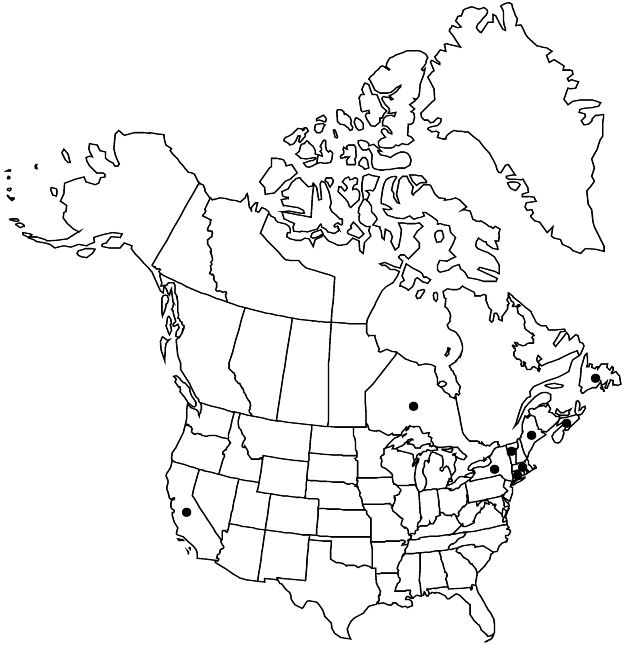Filipendula vulgaris
Methodus, 663. 1794.
Plants cespitose, 5–10 dm. Rhizomes horizontal to nearly vertical, relatively stout, 5–10 mm wide, internodes 0.5–1 cm; root tubers round to elongate, 1–3 cm. Stems glabrous. Leaves: basal 3–6(–7), persistent to flowering; stipules ovate, 0.8–1.2 cm, apiculate, base auriculate; lateral leaflets in 7–17 pairs, close, lanceolate, to 3 cm, margins deeply dentate; terminal leaflets lanceolate, to 3 cm, 3-lobed, lobes lanceolate, margins deeply dentate, apex acute, abaxial surface glabrous or hairy on nerves, hairs appressed, straight to curly. Inflorescences usually less than 100-flowered; branches and pedicels glabrous. Flowers: hypanthium concave, becoming convex in fruit; sepals (5–)6–7(–9), green, spatulate to triangular, 2–3 mm, margins without midrib, glabrous; petals (5–)6–7(–9), white to cream, obovate, 5–8 mm, clawed, base narrow, margins entire; stamens white, about equal to petals. Achenes 10–18, slightly flattened, ovate, straight, 3–5 mm, densely appressed-hairy throughout, hairs straight, short; sessile (attached to enlarged globose torus); styles 0.5–1 mm. 2n = 14, 14+2B (Europe, w Asia).
Phenology: Flowering summer (Jun–Jul).
Habitat: Abandoned gardens and cemeteries, well-drained short grasslands
Elevation: 0–1000 m
Distribution

Nfld. and Labr. (Nfld.), N.S., Ont., Calif., Conn., Maine, Mass., N.Y., Vt., Eurasia, n Africa.
Discussion
Filipendula vulgaris has been cultivated as an ornamental in North America and probably escapes. The native range stretches from Atlantic Europe to southwestern Siberia (Altai Mountains), and from southern Scandinavia to northern Africa. Despite strong morphologic differences from the other species of Filipendula, it is probably related to F. ulmaria (I. A. Schanzer 1994). Two additional names have been associated with this species: Filipendula hexapetala Gilibert is a rejected name, and F. hexapetala Gilibert ex Maximowicz is illegitimate.
Selected References
None.